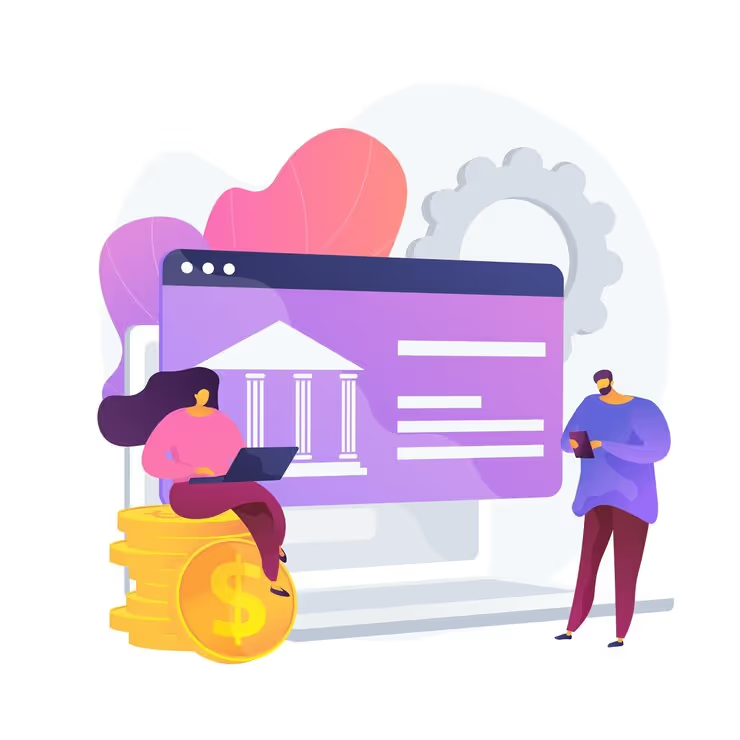
Open banking is the use of open APIs (application programming interfaces) from a financial institution that allows third-party developers to build applications and services based on it. Open banking allows the account holders financial transparency options by opening up closed banking systems, such as open data or better personal financial management.
Open banking will soon become a very popular trend for fintechs and impact the future of online retail. This article will examine the secret sauce of how open banking APIs are re-imagining these industries.

Open banking refers to the ability of third-party providers to access a consumer’s financial data through APIs. In enabling secure sharing of financial information between banks, financial technology providers and other approved applications, these APIs provide the ability to share financial information securely.
Any of these are examples of how you can use an open banking API to include the following conversations in your app: A budgeting app could get data from your bank’s transaction history, an accounting platform could integrate with multiple bank accounts, or a financial advisor could analyse your finances.
Fintech apps can access these financial data directly and securely without the need for users to screen scrape data, download bank statements, or provide their passwords to access the financial account. This makes it possible for fintech developers to focus on developing apps and services based on personal financial management, investments, accounting and financial advice. To explore cutting-edge open banking solutions, visit https://www.luxoft.com/industries/banking/open-banking.
Open banking is rapidly changing the fintech landscape in five key ways:
Open banking removes a major barrier to fintech innovation by providing direct access to financial data. Developers can dream up ideas for new financial tools without worrying about the technical challenges of aggregating financial data. For example, apps like Cleo and Emma use open banking to analyse spending and provide budgeting advice.
New banking as a service, in turn, fuels open banking, which enables nonbank companies to use APIs to integrate financial services rather than needing to be licensed banks. Railsbank and Solarisbank use open banking to create providers that offer banking functionality as a set of API services. These can be tapped into by Fintech companies to allow payments, account creation, lending, card issuance, Know Your Customer (KYC) checks, etc.
With open banking, FinTech apps have the ability to access their transaction history, spending behavior, account balance, etc. They can thus provide hyper-personalised services based on a user’s very specific financial behavior and needs. Cleo and Plum are apps that use these data to recommend how to save money, cut down on subscriptions and fees, etc.
Open banking allows accounting, bookkeeping, taxation platforms, and other business finance apps to connect with company bank accounts automatically to import and categorise transaction data. This removes tedious manual work, allowing businesses to track revenue expenses, prepare taxes, and manage finances more easily. Providers like Float, ANNA Money, and Coconut leverage open banking for streamlined accounting.
The depth of data available through open banking allows financial advisors and investment platforms to accurately understand a person’s overall financial health across all their financial accounts. This information powers robo-advisors like Nutmeg, which provides personalised investment recommendations tailored to financial goals and risk tolerance. Human advisors also benefit from using open banking data to advise clients better.
While open banking is clearly impacting the emergence of new fintech apps and services, existing online retailers are also harnessing the potential of open banking in three primary ways:
Open banking brings competition to digital payments while providing merchants access to real-time payments via bank transfers. Payment initiation APIs allow online checkout flows to connect directly with the customer’s bank to enable a push payment versus using a debit/credit card. This pulls money directly out of the buyer’s bank account with their permission. These open banking payments enhance security, reduce merchant processing fees, and enable instant transfers.
With customer consent, ecommerce merchants can tap into open banking APIs to access shopper financial data to provide personalised promotions, product recommendations, and tailored pricing based on transaction history and spending habits. For example, if a clothing retailer sees you spend a lot at fitness studios, they could promote activewear to match your tastes. While privacy concerns remain, open banking creates opportunities to hyper-personalise shopping.
Merchants can leverage open banking to identify qualified customers for instant financing promotional offers at checkout. Instead of generally offering all customers the same generic financing or buy now, pay later option, open banking lets retailers use financial insights to present targeted offers to customers identified as having the ability to utilise credit safely. This helps drive more sales conversions while reducing the risks of non-payment.

As the adoption of open banking increases, its impact on fintech and retail will continue to grow. Here are some key statistics that demonstrate the accelerating pace of open banking:
Clearly, open banking is gaining significant consumer and business interest - which will ultimately drive more fintech innovation and retailer adoption.
To see open banking in action, here are some leading examples of fintech apps and retailer use cases harnessing open APIs:
As more financial institutions continue implementing open banking-compliant APIs, we will see increasingly advanced and integrated financial services. The open data environment enables the financial ecosystem to leverage shared customer-approved data for better applications.
In the end, open banking gives consumers the power to securely share their data with trusted financial apps or services that offer more transparency, savings, advice, control, and convenience tailored to their needs.
In the future, open banking is expected to expand even further into more data, including pensions, investments, mortgages, insurance and tax data, among others, to enable a one-stop shop, personalised financial dashboard.
While adoption remains in the early stages, open banking is laying the foundation for the future of financial services - one that is digitally connected, insights-driven, highly personalised and customer-empowered. The opportunities for fintech innovation and online retail personalisation are endless, thanks to open banking APIs.